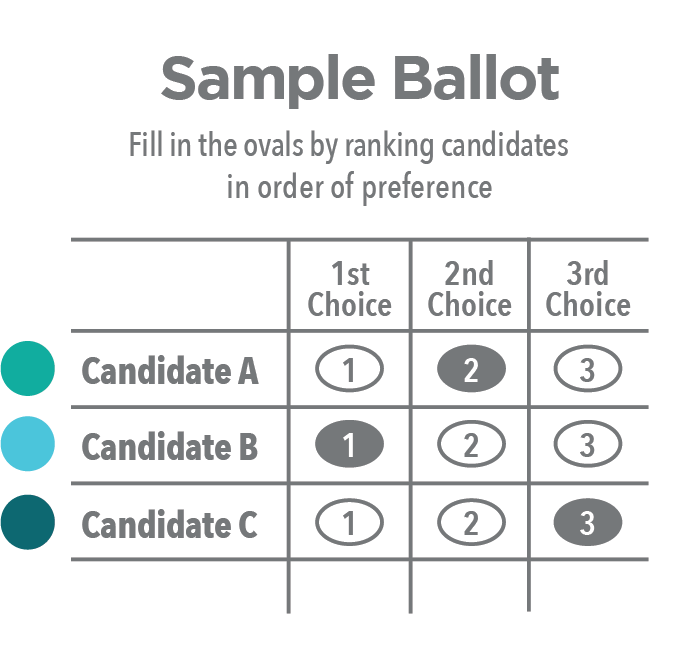1-Person, 1-Vote System
This is how Ranked Choice Voting works…
Ranked Choice Voting (RCV) is as easy as 1-2-3. Every voter gets one vote, but under RCV, voters have the power to rank candidates in order of preference instead of choosing just one. Your vote always counts for your highest-ranked candidate, and your second choice only counts if your first choice is defeated.
See below:
How do I vote?
You rank candidates in order of your preference on your ballot — that’s it! Your second or third choices will only count if your first choice (or second choice) candidate is eliminated.
How is my vote counted?
With Ranked Choice Voting, in order to win, a candidate needs a majority of votes (50%+1) in the final round. If one candidate gets a majority of first-choice votes, that candidate wins. If not, the candidate with the fewest first-choice votes is defeated. If that candidate was your first choice, your ballot now counts for your second choice. If your first choice is still in the running, then your ballot stays with that candidate. This process continues until one candidate reaches a majority and wins.
In the example above, there are 100 voters, so the winning candidate needs at least 51 votes to win. In Round 1, the first-choice votes for each candidate are counted. No candidate has a majority of first-choice votes. Candidate B has the fewest votes and is defeated. In Round 2, voters who liked Candidate B the best now have their ballot count for their second choice - of the 23 voters who liked Candidate B the best, 8 chose candidate A as their second choice and 15 chose candidate C as their second choice. Voters who ranked Candidates A or C as their first choice continue to have their ballot counted for their first choice. Candidate C is the majority winner in a single, decisive election.



